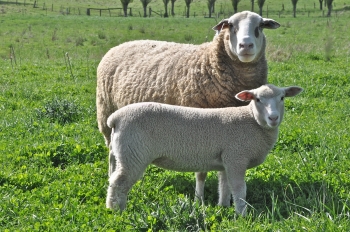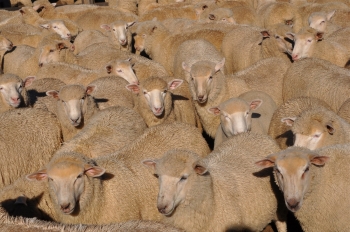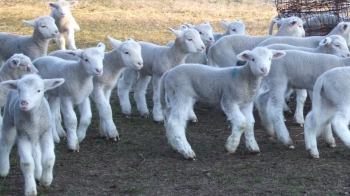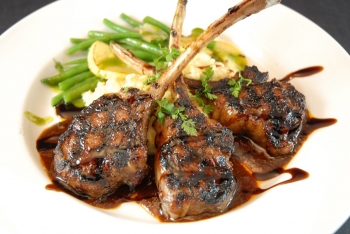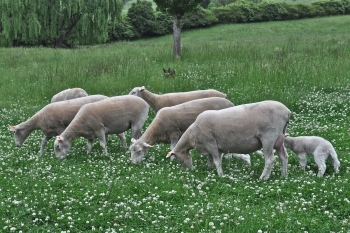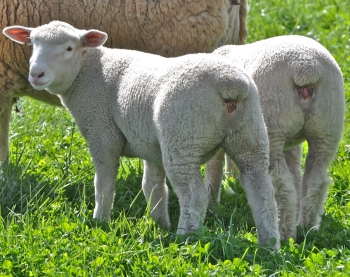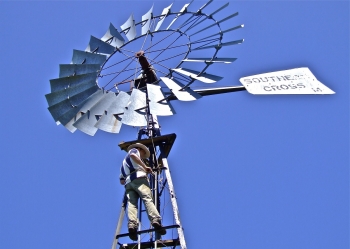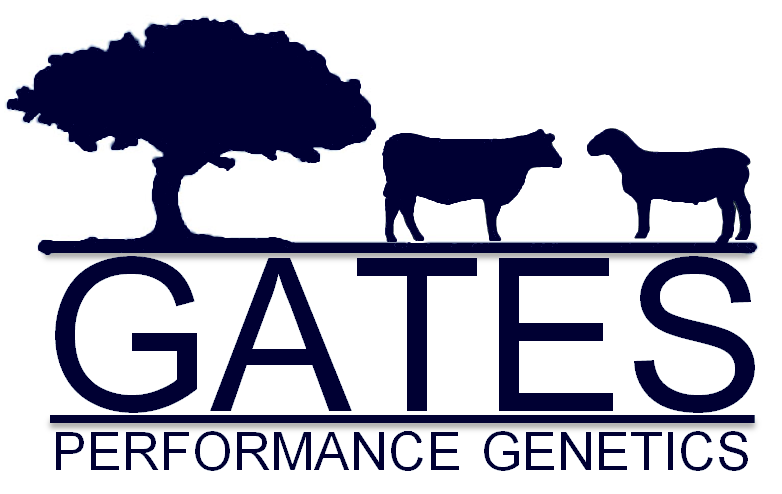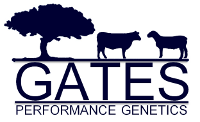
Commercial Benefits
Producer demonstration shows buying rams without breeding values is an expensive exercise
Brent McLeod, NSW Department of Primary Industries
Ashley White, NSW Department of Primary Industries
Most lamb producers would be happy selling 26kg (HSCW) lambs at current market prices but for one family in Northern New South Wales the loss of breeding ewes has been the major burden on their production system.
The mixed farming operation involves joining 1700 1st X cross ewes in March / April to lamb in August / September. Lambs have generally been sold from February to May at target weights of 24-28kg HSCW. They have been long term advocates of Over the Hook (OTH) sales of lambs with a preference to forward contracting at known prices. Managing ewe losses and maximising weaning rates is the next step to improving their bottom line.
Producer benefits:
In 2009, disillusioned by the performance of their lambing they set out to make major changes by conducting two on farm trials that investigated Birthweight and growth rate within their current production system. They set themselves two aims
- To minimise the number of ewe and lamb losses due at lambing
- Investigate the difference in value of lambs sired by rams with breeding values in the top 10% PWWT (growth) versus industry average PWWT.
Birthweight Trial
Mature age ewes were randomly split into groups and joined to compare the performance of moderate birthweight versus and non Lambplan tested. The same visual selection criterion was used to select each of the rams for purchase
Table 1: Average ASBV’s for each sire group (across flock).
|
Sire group |
Birthweight |
Growth (PWWT) |
PFAT (post weaning fat) |
PEMD (eye muscle depth) |
|
Lambplan |
0.36 |
14.2 |
-0.15 |
1.4 |
|
Non Lambplan |
Unknown |
Unknown |
Unknown |
Unknown |
The ewes were lambed in August / September and lambs marked in late September. Throughout lambing ewes were monitored and records of ewe assistance and losses maintained.
Table 2 shows it is necessary to select rams with moderate birthweight ASBV’s .
Table 2: Average dystocia and weaning rates expressed as a percentage of the mob
|
Sire group |
Ewes assisted & survivied |
Ewe deaths at lambing |
Marking % |
|
Lambplan with Mod Bwt |
0.7% |
0.7% |
149% |
|
Non Lambplan |
2.6% |
2.7% |
148% |
With replacement ewe prices at $200/hd (March 2011) and weaned lambs worth approx $80/hd then the cost of losing ewes at lambing was approx $320 when the trial achieved close to 150% weaning rates.
A difference of 2% in death rate between groups represented a loss of 20 ewes or $4,000 per 1000 ewes joined without allowing for the loss in lamb value.
Growth rate trial
Mature age ewes were randomly split into groups and joined to compare the performance of moderate Birthweight with high growth versus moderate Birthweight and average growth (see Table 3. below).
Table 3: Average EBV’s for each sire group (across flock).
|
Sire group |
Birthweight |
Growth (PWWT) |
PFAT (post weaning fat) |
PEMD (eye muscle depth) |
|
High PWWT |
0.36 |
14.2 |
-0.15 |
1.4 |
|
Average PWWT |
0.22 |
7.7 |
-0.73 |
0.95 |
From Table 4 we can see that the high PWWT sired lambs were 5.1 kg liveweight heavier at the time of selling , at slaughter this equated to 2.5kg carcass weight (the lambs achieved 48% dressing percentage). At a market price (March 2011) of $6.00/kg, when the lambs were sent for slaughter, this was worth an extra $15+ per lamb and having averaged 100 lambs per ram joined returned an extra $1,500 per ram in the first year.
Table 4: Average liveweight of lambs at 3 different growth points
|
Sire group |
Weaning 1st week Jan |
1st week of Feb |
Selling 2nd week of March |
|
High PWWT |
39.0 |
43.2 |
57.1 |
|
Ave. PWWT |
36.8 |
39.0 |
52.0 |
Conclusion
The simplest way for producers to increase their returns from lamb production is to
- Minimise ewe losses by always purchasing terminal sires with moderate ASBV’s for birthweight and correct shoulder / brisket structure.
- Purchase rams with high ASBV’s for PWWT so lambs are heavier at the same age of turnoff.
DOLLARS MAKE SENSE !!
* Save $ 4000 on EWE REPLACEMENTS per thousand ewes per year *
* LAMB PRODUCER Increases returns by $1500/ram/year *
**** LAMB PRICE UP BY $15 PER LAMB ****
TOTAL per thousand ewes =$24 000 *
These figures are conservative and for a high performance self-replacing maternal flock weaning rates of >150% are quite achievable. Leading to even bigger profit margins by selecting better quality rams.
